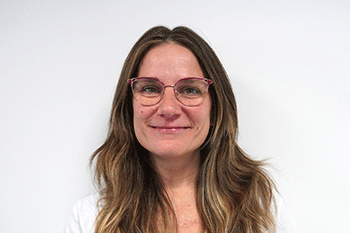As we observe World Radiology Day, we honor the profound impact radiology has made on modern medicine. Celebrating this occasion, we are privileged to present a conversation with Dr. Regina Beets-Tan, MD, PhD, the distinguished Chair of the Department of Radiology at The Netherlands Cancer Institute in Amsterdam.
Dr. Beets-Tan brings a wealth of experience to our discussion about the tech innovations she’s eager to see at the next Radiology congresses, her take on AI’s role in the field, and her thoughts on patient-centered care.
Her expertise and leadership have propelled innovative imaging techniques and enhanced cancer diagnosis and treatment, offering a beacon of hope to patients worldwide.
Emerging Technologies
With the continuous evolution of imaging technologies, what emerging innovations are you most excited about hearing at the upcoming Radiology congresses?
I’m truly excited about the opportunity to keep up with the cutting-edge innovations taking place in our discipline . The continuous evolution of imaging is a remarkable journey. We are experiencing a moment of transformation in Radiology. Imaging is increasingly guiding treatment and have a profound impact on patient outcome . One area I’m always looking forward to is the progress in advanced imaging modalities, both in diagnostic and interventional imaging. New developments, such as progress in spectral CT and photon-counting technologies, as well as AI-based reconstruction in MRI, are revolutionizing not only clinical workflows but, most importantly, disease diagnosis and follow-up, especially in areas like oncology.
A particular area of great interest to me is the development of artificial intelligence (AI) in radiology. New large language models (LLMs) applied to radiology to streamline the reporting task, as well as how AI can be used to provide more insights in cancer, linking imaging to clinical endpoints, are my preferred applications. I can’t wait to engage in discussions with industry leaders about these emerging innovations, learn from the experience of my colleagues and explore the potential of AI for improving patient care and advancing the practice of radiology.
AI and Machine Learning
How do you see the integration of Artificial Intelligence and Machine Learning shaping the future of radiology, and what topic discussions are you expecting to have regarding these technologies?
I believe we are experiencing significant momentum in Europe when it comes to the development of data sharing infrastructures for medical imaging. These infrastructures hold the potential to drive substantial advancements in innovative AI models for cancer applications. An excellent example of this progress is the Cancer Image Europe platform, an EU project co-funded by the European Commission, which is coordinated by the European Institute of Biomedical Imaging Research (EIBIR) and led by Prof. Luis Marti-Bonmati from Hospital Universitari I Politècnic La Fe in Valencia, Spain.
I’m eager to learn from similar initiatives taking place outside Europe and understand how they are addressing global considerations like data privacy, sustainability, and collaboration between academia and industry. The current capabilities in AI implementation heavily rely on the infrastructure and technology provided by industry leaders, enabling high-performance computing and large-scale AI model training.
Radiology should aim to establish connections with its partners: other medical professionals, scientists, policymakers and industry partners including biopharmaceutical industry and technology providers .
In addition to the foundation of data and infrastructure for AI, I am particularly interested in exploring the integration of techniques like radiomics and deep learning with molecular biology and liquid biopsy. This integration has the potential to yield enhanced multi-omics biomarkers. Ultimately, our collective goal is to develop highly sensitive and specific tests based on imaging that can augment prognostic and predictive capabilities. We aim to transform medical imaging into a practical tool for predicting outcomes such as disease-free survival (DFS) and treatment response in various solid tumors.
Radiomics and Precision Medicine
Can you discuss the role of radiomics in advancing precision medicine in the following years ?
Radiomics is currently an established research field within radiology, but its widespread adoption by the oncology community remains the next step. In the next years we will see radiomics evolve into a practical and actionable technique by reducing variability across different institutions and scanners. I am enthusiastic about the developments in image quality harmonization techniques that can ensure consistency in radiomics features.
It is essential to emphasize that not only do radiomics techniques show promise in predicting clinical endpoints, but deep learning techniques for extracting deep features from lesions have also demonstrated their potential. We need to accumulate more robust evidence for these methods and raise awareness, encouraging other disciplines to incorporate them into their decision-making processes in personalized medicine.
Patient-Centered Care
How has the shift towards patient-centered care influenced radiological practices?
The shift towards patient-centered care has had a significant impact on our specialty, placing a greater emphasis delivering more personalized healthcare. Radiology is moving from volume based towards value based practice. Our imaging has become essential in treatment decision making and can have a profound impact on patient outcome. Patient-centered care has also triggered discussions and initiatives around the most optimal service for our patients. This shift has brought about several changes and trends, among which we can find the minimization of radiation exposure, an enhanced communication with patients, capturing and incorporating patient feedback on our processes. Last but not least, AI can have impact on patient care inducing streamlined diagnostic workflows, enhancing image interpretation, and shortening waiting times, all of which contribute to a more patient-centered approach by improving efficiency and convenience.
Reflecting on our enlightening discussion with Dr. Regina Beets-Tan, we are reminded of the dynamic nature of radiology and its critical role in precision medicine. As World Radiology Day, we celebrate the progress we’ve made in adopting AI and machine learning for cancer care, which is reshaping our approach to diagnostics and treatment. Dr. Beets-Tan’s insights underscore the transformative power of radiomics and the potential of technological innovations to enhance patient outcomes. As we look forward, we are inspired by the collaborative spirit of this community, united to harness the full potential of radiology to improve lives.

